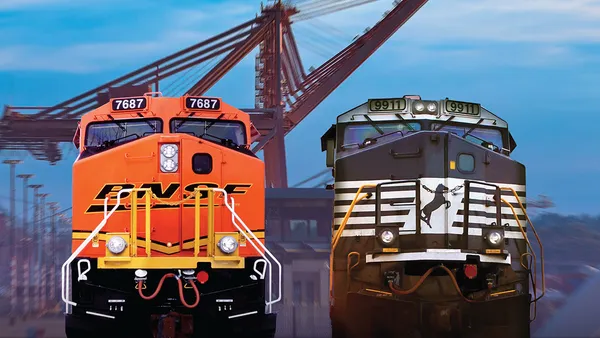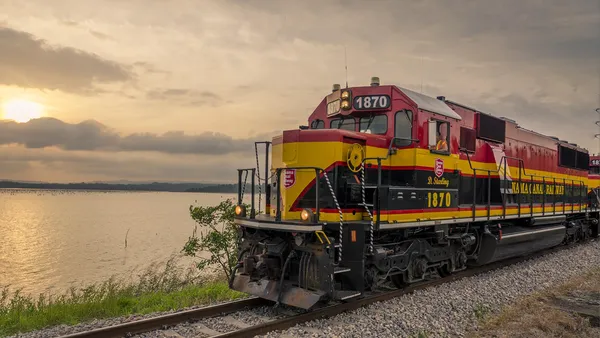Dive Brief:
- CSX reported 95.5% trip plan compliance for intermodal cars for the whole of 2019, 82.6% for carloads, for the fourth quarter of 2019 on a call with analysts Thursday.
- Intermodal lane rationalizations, which began in 2017, are finished now, said Executive Vice President of Sales and Marketing Mark Wallace. The railroad's operating ratio, a measure of overall efficiency heavily emphasized in the age of precision-scheduled railroading (PSR), hit a record low of 58.4% for the full year 2019. CSX projects a 59% OR for 2020.
- Still, with a loose trucking market, operational wins are not creating immediate growth in intermodal volumes as intended. Intermodal revenue was down 9% year-over-year in the fourth quarter, which executives blamed on lane rationalizations, but was also an industry-wide trend for most of 2019.
Dive Insight:
Efficient, reliable intermodal service is what railroads have held up as the key to converting freight from highway to rail. As Jim Foote, president and CEO of CSX described it, unreliable service is what sent volume from rail to truck.
"When a couple of years ago, your trip plan compliance was 35% and you were trying to get a customer to switch from moving his freight in a truck to rail, he didn't have a lot of confidence," said Foote on the call.
The CEO said trip plan compliance, a metric showing how often cars follow their intended route, was a difficult piece of the PSR puzzle for the CSX team. He still isn't satisfied with the carload number, but putting the individualized trip plan data in the hands of the customer, which began rolling out in the third quarter, is an important step toward proving the reliability the macro stats would suggest.
"It took the railroad industry decades of poor service to drive the business off the railroads onto the trucks. We are not going to get the business off the highway back on to the railroad in two weeks. So we're going to have to earn it," said CFO Kevin Boone.
What CSX won't do to win over shippers is slash rates. Foote said there are billions of dollars in opportunity in converting the freight existing customers currently put on trucks, so underpricing other railroads is not a healthy strategy long-term.
"It is crazy for me to go over there and price my service as a commodity to try and pick up a couple of million bucks of the other railroad. That's the business model that has run the railroad industry down for decades. And that is not the business model that we are pursuing," said Foote.
Total revenue for the railroad in 2019 was down in every freight category except agriculture and food, and minerals, with coal down a dramatic 22% year-over-year — coal volume is unlikely to ever fully return, according to executives.
Regarding 2020, the railroad expects revenue to be flat to down 2%, which means CSX likely won't get the opportunity to prove it can maintain such high service metrics with more volume in the near term.














